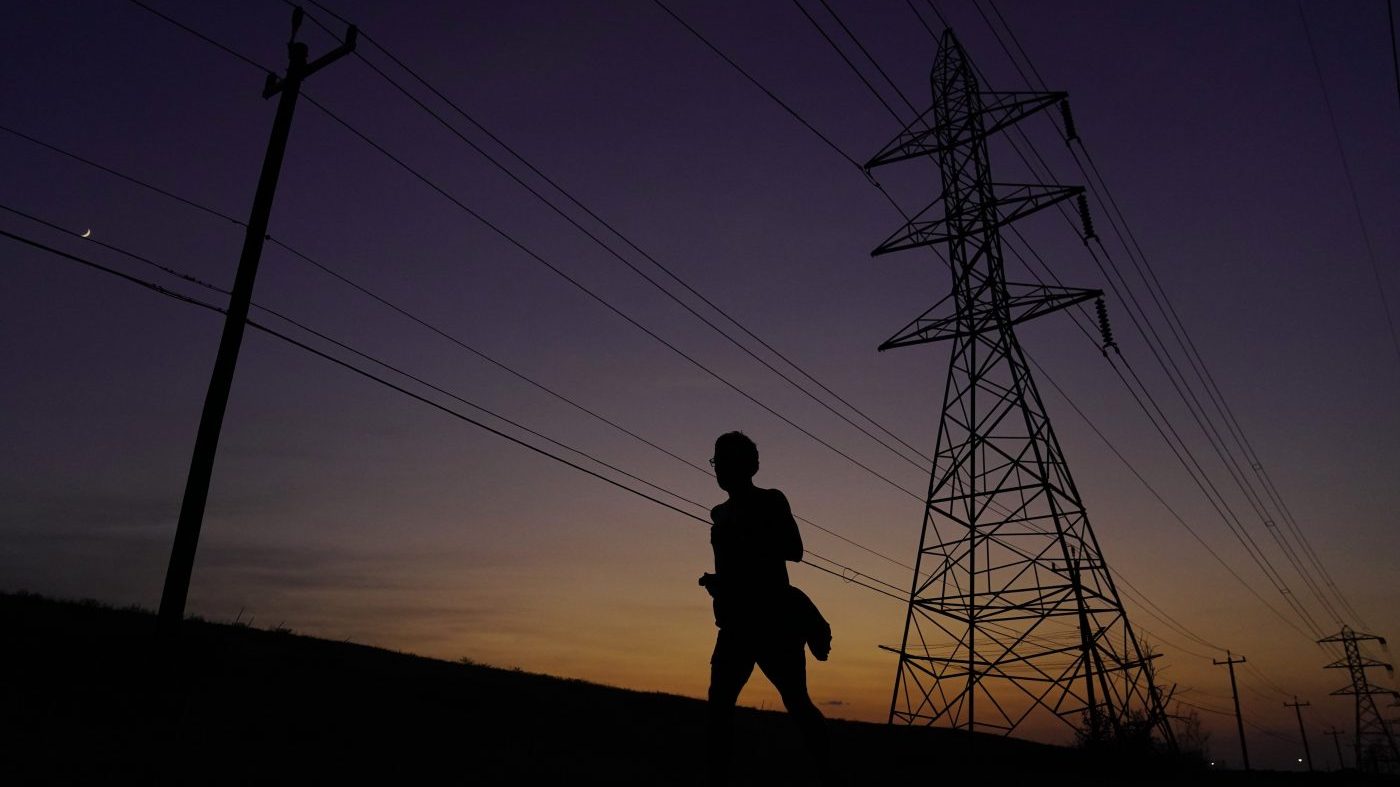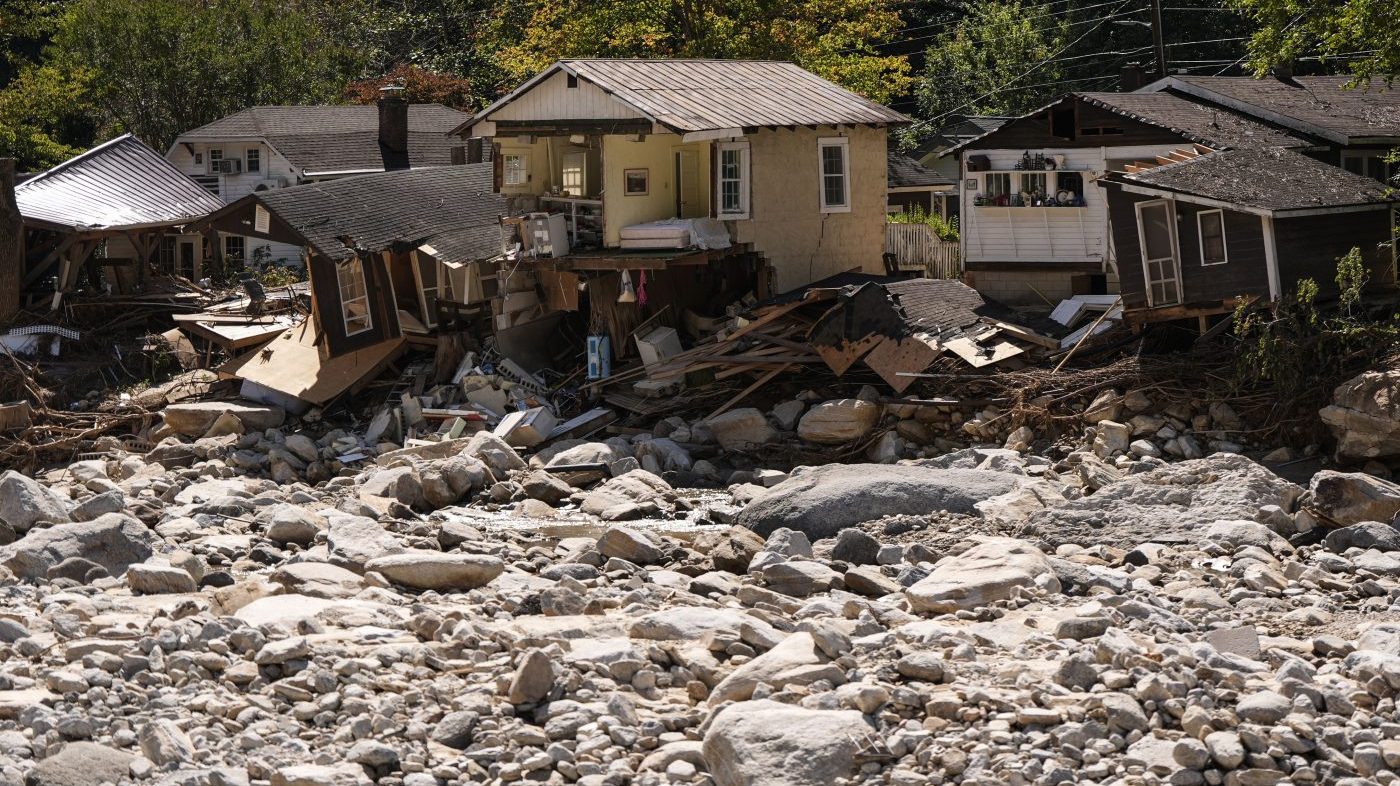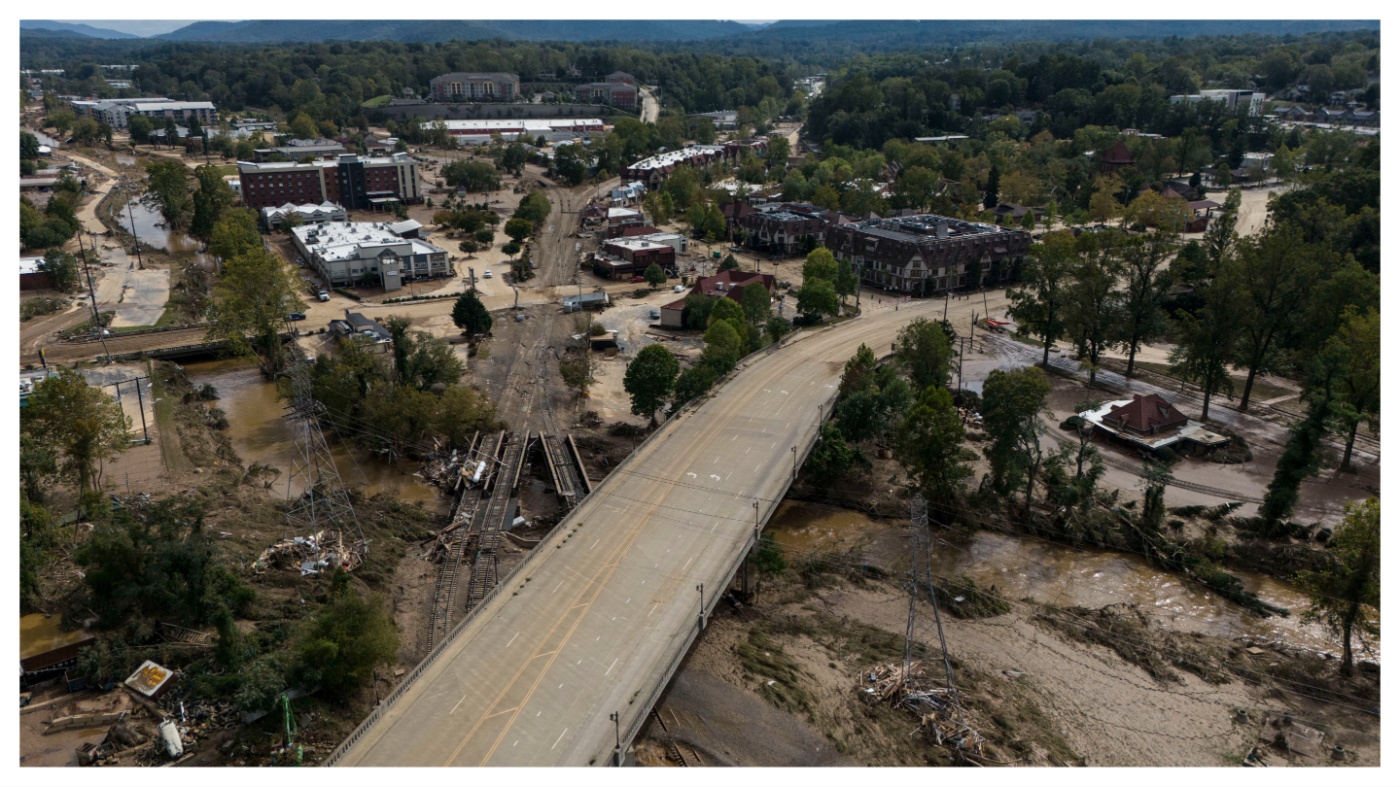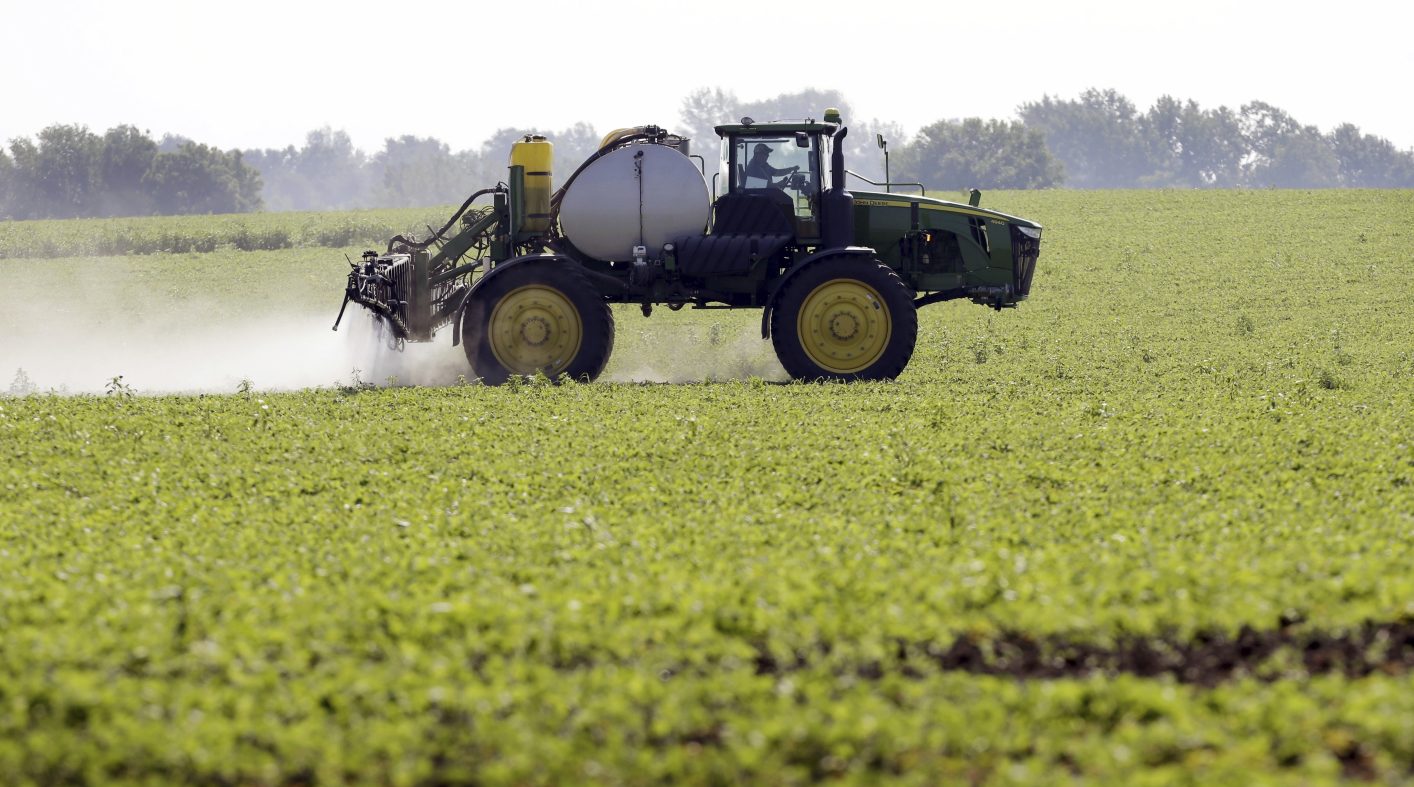The area was dubbed a potential “climate haven” due to its elevation and temperate climates as recently as 2022.
The storm and its aftermath illustrate the damage that can be wrought by just one of the unusually extreme weather events that are becoming magnified by climate change.
“Some of these places, especially at higher elevation, it’s not too hot, you’re far from the coast … places like Asheville have a lot of appeal” as climate refuges, said Margaret Walls, an environmental economist and a senior fellow at the nonprofit Resources for the Future.
However, she said, in the mountains “the terrain makes it such that flooding is a problem,” and particularly in poverty-stricken areas, “there are a limited number of places people can live so they tend to live in flood prone places.”
“From a rainfall perspective, the Appalachian Mountains are woefully unprepared — at the community level, the household level, our infrastructure is not prepared,” said Nicolas Zegre, an associate professor of forest hydrology at the West Virginia University Davis College of Agriculture and Natural Resources.
Much of the rain fell on mountain communities with only one or two roads leading in or out, meaning that once they were washed out, it became all but impossible to deliver supplies and relief through overland routes.
“The lesson here is trends matter and there are certain locations that get hit repeatedly, but no place is really immune — every place needs to prepare,” she added. And when an area has limited resources — and a limited tax base — to begin with, a disaster at this level makes the rebuilding process even more difficult and complex.
Read more at TheHill.com.
























